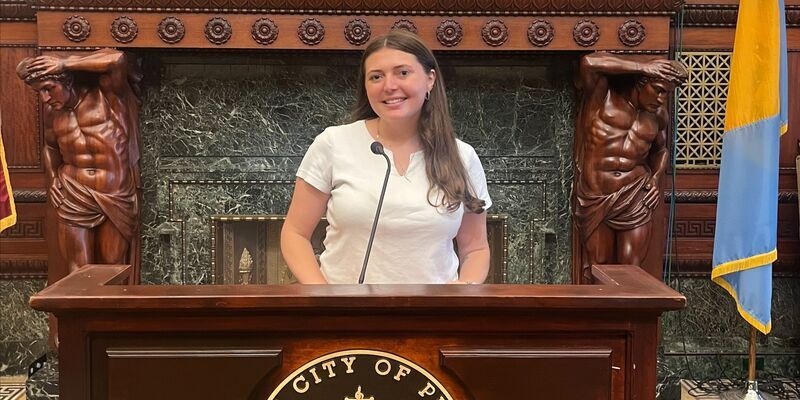Temple alum’s debut book reveals Philly’s ties to Irish Republican Army gun smuggling during the Troubles
A new book by Ali Watkins, KLN ’14, investigates the history of the Troubles and Philadelphia’s secret role in smuggling American guns to the Irish Republican Army (IRA).

As a Temple student interning with McClatchy DC, Ali Watkins, KLN ’14, helped break a national story about the CIA spying on the Senate in 2014. For that reporting, she became a 2015 Pulitzer finalist and went on to work as a reporter for the New York Times.
Her debut book, The Next One Is for You: A True Story of Guns, Country, and the IRA’s Secret American Army, investigates the role of Irish immigrants in Philadelphia smuggling mass weapons into Northern Ireland during the Troubles, a violent conflict involving the Irish Republican Army (IRA), British security forces and Unionist paramilitaries that spanned from the late 1960s to 1998.
“In the early days of the Troubles, the vast majority of the semi-automatic weapons—Armalites —that the IRA were receiving came from America, specifically from Philadelphia,” said Watkins. “In the whole lens of this book, I really wanted to interrogate how Irish Americans impacted the course of the Troubles. I think the biggest takeaway is that it's hard to say what the IRA would have become without such an influx of American guns coming from Philadelphia.”
At the time, British Unionists wanted Northern Ireland to remain part of the United Kingdom, while the IRA sought to end British rule in the province and unify it with the Republic of Ireland. Watkins explained that small groups of Irish immigrants in Philadelphia would buy masses of rifles, hide them in vehicles and drive them down the New Jersey Turnpike before sneaking them to the docks in New York. There, the weapons were stashed in sympathetic warehouses, packed like furniture or plumbing supplies and smuggled by ship across the seas to Northern Ireland or the Republic.
After years on the New York Times crime beat, Watkins found the story that inspired her book—family stories she had always heard of her great-grandfather’s ties to the IRA during the Irish War of Independence. He was enlisted in the IRA and worked with a Liverpool unit, eventually fleeing to Philadelphia in the 1920s. His reasons for fleeing were unclear. She found documents showing he settled in Drexel Hill and grew up with his family in Olney and Mayfair, realizing he did so to live in neighborhoods with strong Irish communities as an Irish American.
“My family is from Philadelphia originally, mostly the Northeast, which is where my great-grandfather landed. In trying to tell the story of his environment and neighborhoods, I realized that he wasn't really on his own out there. These were some of the most heavily Irish neighborhoods in Philadelphia at one time,” said Watkins. “Through digging into his history, it became a bigger story about Irish Philadelphia in general.”
While searching online for more connections involving Philadelphia, the IRA and guns, she came across a 1975 New York Times article with a headline that read “5 indicted in Philadelphia in Ulster gunrunning,” which became a key lead in her research that helped inspire her book.
“I had never heard much written about this story before, and that kind of opened up this rabbit hole for me looking more into Irish connections in Philadelphia and Northern Ireland, and it unspools very organically from there,” said Watkins.


